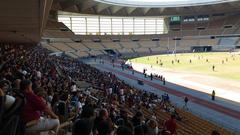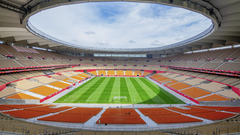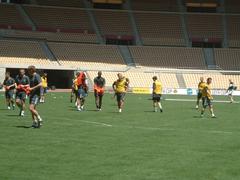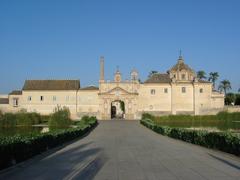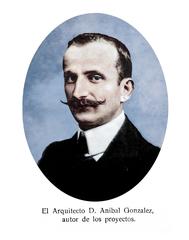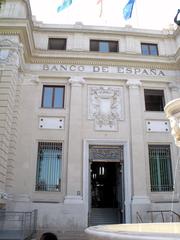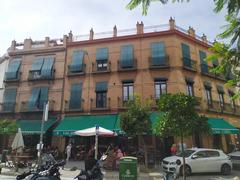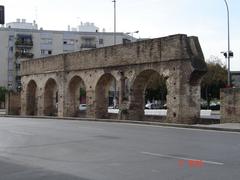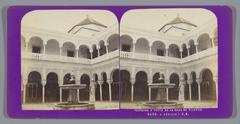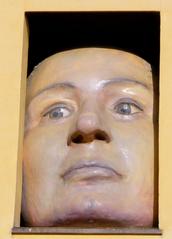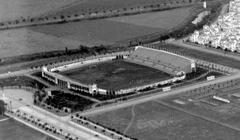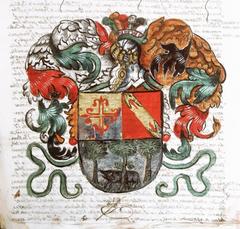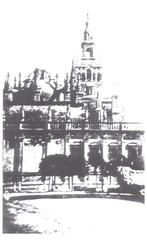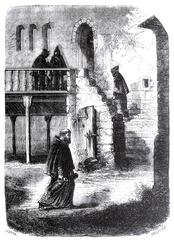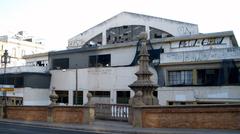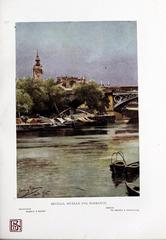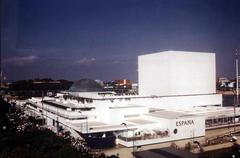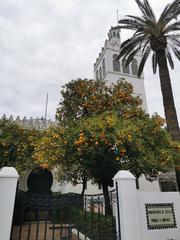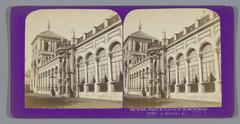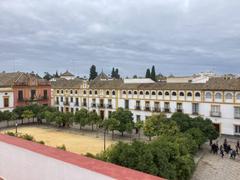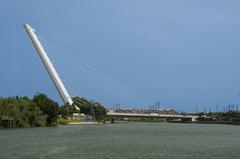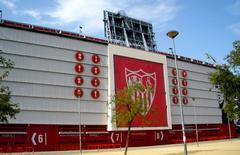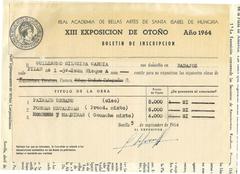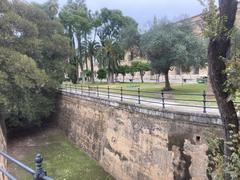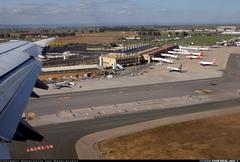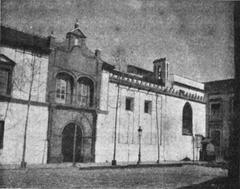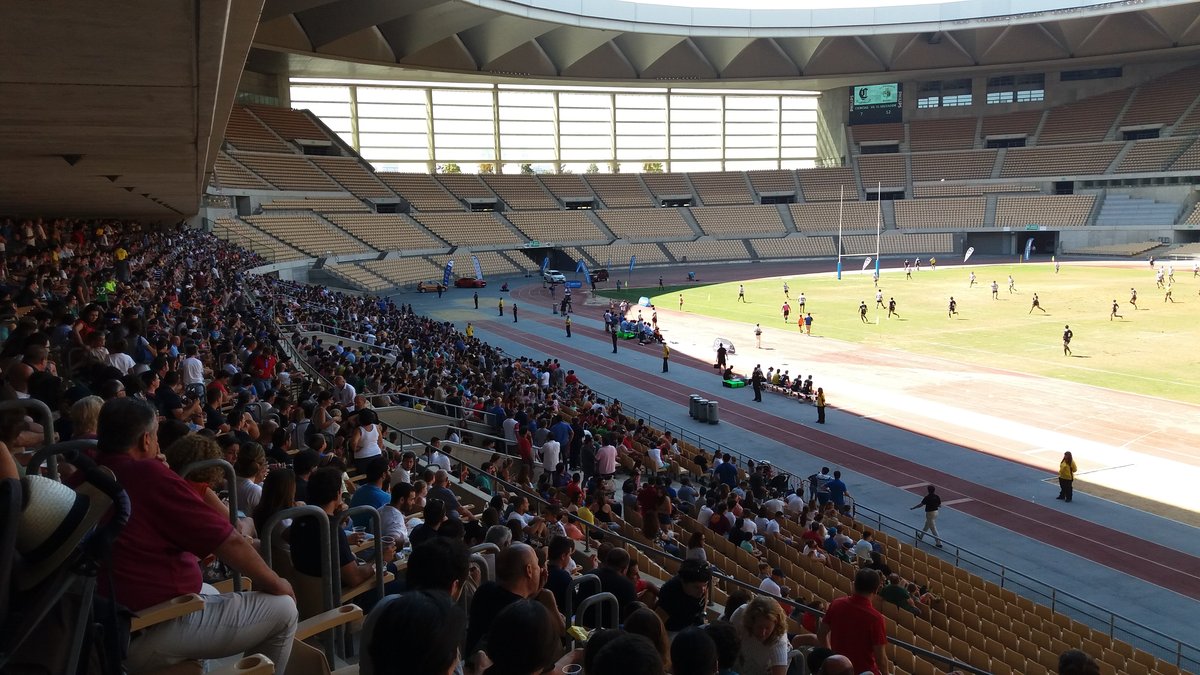
Estadio de La Cartuja: Visiting Hours, Tickets, and Seville’s Premier Historical Sports Venue
Date: 14/06/2025
Introduction
Estadio de La Cartuja is a symbol of Seville’s sporting ambition and cultural vitality. Evolving from an Olympic dream to a modern, sustainable stadium, La Cartuja is now a centerpiece for major football matches, concerts, and international events. Located on Isla de La Cartuja, the stadium is not only a must-visit for sports fans but also for travelers exploring Seville’s rich history and vibrant present. This guide offers comprehensive information on visiting hours, ticketing, amenities, nearby attractions, and the stadium’s ongoing transformation, ensuring a seamless and memorable experience for every visitor (Libero Guide; StadiumDB).
Table of Contents
- History and Significance
- Architectural Evolution and Renovations
- Key Events and Cultural Role
- Visiting Information
- Nearby Attractions and Travel Tips
- Stadium Facilities and Visitor Experience
- Sustainability Initiatives
- FAQs
- Visuals, Media, and Useful Links
- Conclusion
History and Significance
Estadio de La Cartuja emerged from the legacy of Expo 1992, constructed on the Isla de La Cartuja to support Seville’s Olympic ambitions for 2004 and 2008. Opened in 1999 with a Spain-Croatia football friendly, the stadium was designed as a multi-purpose arena with an athletics track, reflecting the city’s desire for global sporting recognition (Libero Guide; StadiumDB).
Despite not securing the Olympics, La Cartuja quickly established itself as a premier venue, hosting the 1999 IAAF World Athletics Championships, the 2003 UEFA Cup Final, numerous Copa del Rey finals, and international fixtures. Its flexible design enabled use for concerts, business events, and community gatherings, but the lack of a permanent football tenant led to periods of underuse.
Architectural Evolution and Renovations
Original Design
The stadium, designed by Antonio Cruz Villalón and Antonio Ortiz García, initially featured an athletics track and a capacity of 57,629. Its bowl-shaped stands and open roof exemplified late-20th-century multipurpose stadium architecture (Wikipedia).
Modernization (2024–2025)
By the late 2010s, maintenance challenges and outdated facilities necessitated a major overhaul. A two-phase redevelopment began in 2024:
- Phase One: Removal of the athletics track, lowering the pitch, and construction of new lower-tier stands brought fans closer to the action and expanded capacity to nearly 70,000 (StadiumDB; TheStadiumBusiness).
- Phase Two: Ongoing upgrades include a glass roof, facade renovation, new seating, photovoltaic panels, and expanded hospitality facilities, aiming for completion ahead of the 2030 FIFA World Cup (Coliseum Online; StadiumDB).
Key Events and Cultural Role
Estadio de La Cartuja has been the stage for defining moments in Spanish sports and culture:
- Football: Copa del Rey finals (2020–2025), 2003 UEFA Cup Final, UEFA Euro 2020 matches, and Spanish national team fixtures (StadiumDB).
- Athletics and Multi-Sport: 1999 IAAF World Athletics Championships, rugby tournaments, Davis Cup tennis finals (Concerts50.com).
- Concerts and Festivals: Hosting international artists and large-scale events including the DIVERSA Pride Festival and Puro Latino Sevilla Fest (Estadio La Cartuja Official Site).
- Business and Community: Venue for conferences, product launches, and community gatherings, with on-site hotel, medical clinic, and corporate spaces.
Visiting Information
Hours and Tickets
- Visiting Hours: Generally open for events and guided tours from 10:00 AM to 6:00 PM. Schedules may vary; always check the official website for updates.
- Tickets: Purchase online through the stadium’s official platform, authorized sellers, or at the box office. Early booking is recommended for high-demand events.
- Guided Tours: Offer behind-the-scenes access (locker rooms, press areas, VIP lounges). Book in advance via the official site.
Accessibility
- Fully accessible with ramps, lifts, accessible restrooms, and reserved seating. Assistance is available upon request (StadiumsGuide).
Transportation and Parking
- Public Transport: C2 Cercanías train (15 minutes from city center), buses 36 and C2, and future Metro Line 3 will provide direct access. Walking/cycling routes along the Guadalquivir River are scenic alternatives.
- Parking: Indoor facilities for 264 cars and 8 buses; outdoor parking for up to 20,000 vehicles. Expansion is underway as part of ongoing renovations. Arrive early on event days to secure parking (StadiumsGuide).
Nearby Attractions and Travel Tips
- Isla Mágica Amusement Park: Family-friendly theme park adjacent to the stadium.
- Guadalquivir River: Picturesque riverside walks and cycling paths.
- Seville’s Historical Sites: Plaza de España, Seville Cathedral, and Alcázar are easily accessible by public transport or taxi.
- Accommodation: Exe Isla Cartuja hotel is integrated into the stadium, offering rooms with pitch views (MySportsTourist).
Travel Tips:
- Use public transit to avoid parking congestion.
- Arrive early to enjoy facilities and avoid crowds.
- Check estadiocartuja.es for real-time updates and visitor guidelines.
Stadium Facilities and Visitor Experience
- Seating: Over 70,000 seats, including general admission, VIP boxes, and accessible areas. Modern digital signage and displays facilitate navigation.
- Hospitality: Executive boxes, lounges, and event spaces suitable for corporate and private functions (Andalucia.com).
- Amenities: Multiple food and beverage options, Wi-Fi, merchandise stores, accessible restrooms, and family meeting points.
- Security: CCTV, medical support, and multilingual staff ensure visitor safety and comfort.
- Event Versatility: Quick conversion between sports and concerts with retractable stage and advanced lighting/sound systems (The Game Galleria).
Sustainability Initiatives
La Cartuja is a leader in stadium sustainability:
- Photovoltaic Panels: 768 panels generating 353.28 kWp, reducing CO₂ emissions by 300,000 kg annually—enough to power 1,500 homes (Estadio La Cartuja Official Site).
- Eco-Friendly Design: Energy-efficient lighting, glass roof for natural light, and plans for further green upgrades in line with Seville’s urban development goals.
Frequently Asked Questions (FAQs)
Q: Can I visit Estadio de La Cartuja when there is no event?
A: Yes, guided tours are available on non-event days. Check the official website for schedules.
Q: How do I buy tickets for matches or events?
A: Tickets are available online, via the box office, and through authorized sellers. Early booking is advised for popular events.
Q: Is the stadium accessible for people with disabilities?
A: Yes, with ramps, elevators, accessible restrooms, and dedicated seating areas.
Q: What are the best transport options?
A: C2 train, city buses, future Metro Line 3, and expanded parking facilities.
Q: What other attractions are near the stadium?
A: Isla Mágica, Guadalquivir River, Plaza de España, Seville Cathedral, and Alcázar.
Visuals, Media, and Useful Links
- Image suggestion: Aerial view of Estadio de La Cartuja, showing the renovated façade — alt text: “Estadio de La Cartuja aerial view, Seville”.
- Image suggestion: Interior seating after 2025 renovation — alt text: “Estadio de La Cartuja modernized seating”.
- Virtual tour: Available on the official website.
Useful Links
Conclusion
Estadio de La Cartuja exemplifies Seville’s fusion of sport, culture, and innovation. Its recent and ongoing renovations have transformed it into a modern, accessible, and sustainable venue, ready to welcome visitors from around the world for football, concerts, and cultural events. Whether you’re attending a major match, enjoying a world-class concert, or simply exploring one of Spain’s most significant stadiums, La Cartuja delivers a memorable experience at the heart of Seville’s vibrant landscape.
Plan your visit today, book your tickets in advance, and explore more of Seville’s historic sites with our related guides. For real-time updates and exclusive visitor content, download the Audiala app and follow us on social media.
References and Useful Links
- This guide references and synthesizes information from:
